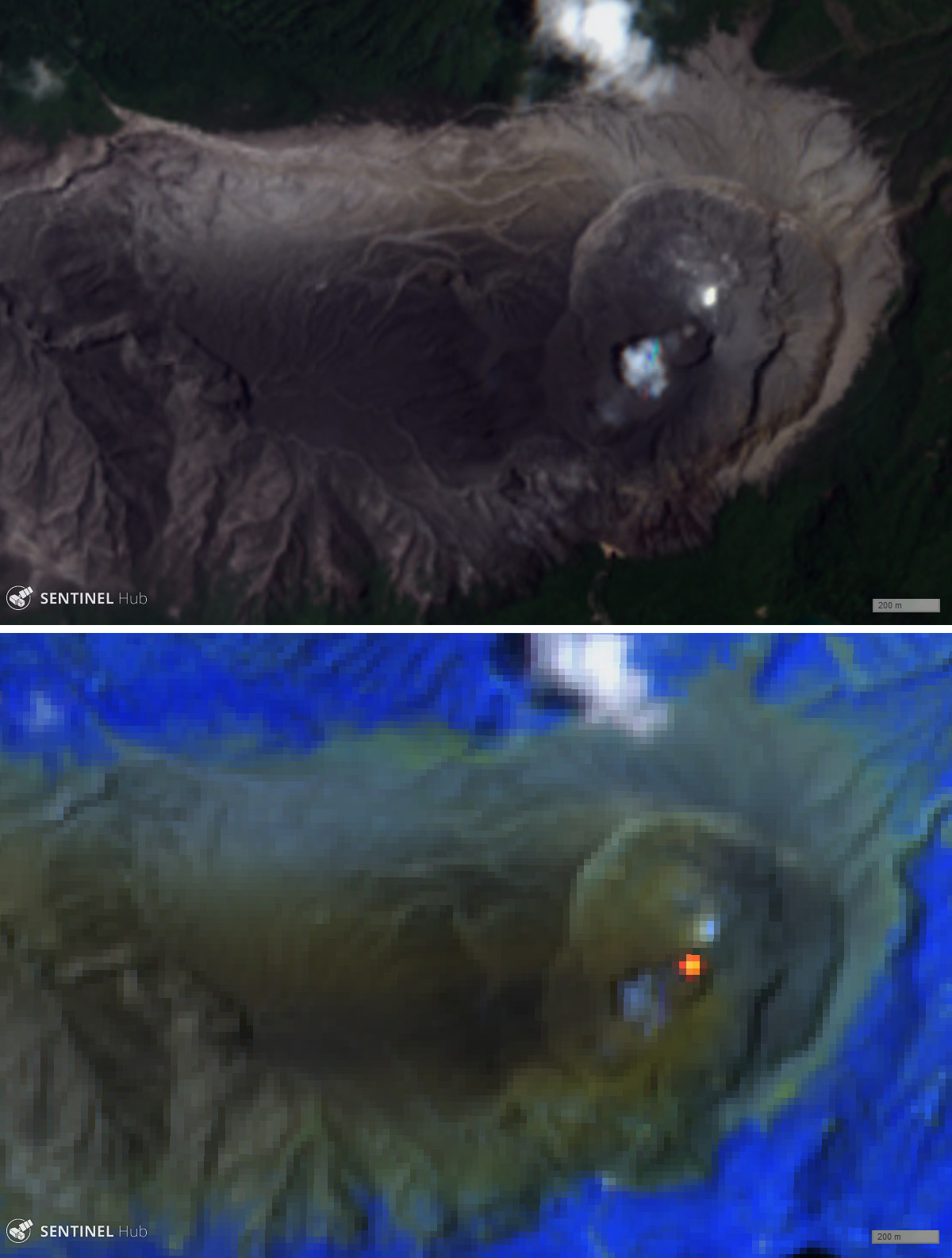Report on Poas (Costa Rica) — May 2019
Bulletin of the Global Volcanism Network, vol. 44, no. 5 (May 2019)
Managing Editor: Edward Venzke.
Research and preparation by Paul Berger.
Poas (Costa Rica) Weak ash emissions and disappearance of the crater lake
Please cite this report as:
Global Volcanism Program, 2019. Report on Poas (Costa Rica) (Venzke, E., ed.). Bulletin of the Global Volcanism Network, 44:5. Smithsonian Institution. https://doi.org/10.5479/si.GVP.BGVN201905-345040
Poas
Costa Rica
10.2°N, 84.233°W; summit elev. 2697 m
All times are local (unless otherwise noted)
Weak activity at Poás during 2018 was dominated by hydrothermal degassing and a hot acid crater lake that had dried several times (BGVN 44:01). The current report characterizes activity between 1 January and 30 April 2019 and is based upon weekly reports by the Observatorio Vulcanologico Sismologica de Costa Rica-Universidad Nacional (OVSICORI-UNA).
According to OVSICORI-UNA, phreatic explosions that began on 19 December 2018 continued through at least mid-January, reaching a peak on 15 January, and then decreasing. Seismicity decreased to background levels, although long-period (LP) earthquakes and, until 16 January, continuous tremor were detected. No deformation was recorded. The SO2/CO2 gas ratio increased until at least 8 January, but decreased after 13 January. The SO2 flow was variable, and measured less than 50 t/d between two explosions and more than 500 t/d during an explosion. Gas emission was vigorous in the absence of water. By the end of January 2019 the lake had disappeared and explosions had stopped. Although tremor had ceased, daily low-amplitude LPs (up to 300/day) continued. SO2 levels were variable, increasing through 13 January and decreasing thereafter; on 25 January it was about 1,000 t/d.
On 7 February 2019 frequent infrasound pulses were associated with the ejection of ballistics and ash emissions that rose no higher than 200 m. Heightened activity stopped on 9 February. During this period the H2S/SO2 ratio increased to a peak on 9 February before decreasing. On 10 February there were SO2 odors reported in areas downwind including San Jose de Naranjo, Grecia (16 km SW), Poás, Sarchá, Naranjo, and Atenas (32 km SW). Incandescence was visible on 11 February. In the morning, a passive and continuous emission of ash occurred without an associated seismic signal. Throughout this period no deformation was observed, no juvenile material was found, and there was no sign of deep magmatic intrusion.
OVSICORI-UNA reported that since 8 February an almost continuous gas emission rose as high as 1 km and drifted mainly SW. During 13-14 February the emissions contained ash; gas-and-ash plumes drifted SW, affecting areas downwind including Naranjo, Zarcero, and Grecia (16 km SW). Gas-and-ash emissions rose from the crater on 15 February, and gas emissions were recorded on 18 February. By mid-February, explosive activity had decreased, although ash emissions continued, unaccompanied by any seismic signal, until ceasing at the end of February.
During 23-26 February seismicity was dominated by low-frequency events. Robust gas emissions rose from four fumarolic vents in the area previously covered by a lake, though the most vigorous emissions originated from vent A (Boca Roja). Minor incandescence from vent A was sometimes visible at night. A sulfur odor was reported in areas downwind including Naranjo, Zarcero, and Grecia (16 km SW). Particles of sulfur were included in ash deposits collected in Naranjo. Ashfall was reported in Canoas de Alajuela on 26 February.
Non-explosive ash emissions resumed during 7-9 March. Although weather conditions often prevented visual observations during 7-8 and 10 March, gas plumes sometimes containing ash rose as high as 500 m above the crater rim and drifting SW. A sulfur odor and ashfall were reported in Naranjo and Grecia. Additional ash emissions were observed on 13 and 18 March, associated with weak tremor but no explosions. The emission on 18 March produced a plume with minor ash content that rose 200 m above the crater rim; after 18 March yellow pulses were observed. Incandescence was observed beginning 21 March (figure 129).
By the beginning of April, the geodesy network had measured a slight tendency towards inflation and extension, but his decreased by the end of April. Toward the end of April very diffuse ash emissions from the crater's bottom were observed, along with a weak incandescence visible on several days; the emissions had ceased by 30 April. Seismicity was stable, with about 150 LP earthquakes/day, infrequent volcano-tectonic earthquakes, and normal background tremor. The SO2/CO2 and H2S/SO2 ratios fell after the ash emission of 30 April. At the end of April, the crater remained without a lake and with slight incandescence.
Geological Summary. The broad vegetated edifice of Poás, one of the most active volcanoes of Costa Rica, contains three craters along a N-S line. The frequently visited multi-hued summit crater lakes of the basaltic-to-dacitic volcano are easily accessible by vehicle from the nearby capital city of San José. A N-S-trending fissure cutting the complex stratovolcano extends to the lower N flank, where it has produced the Congo stratovolcano and several lake-filled maars. The southernmost of the two summit crater lakes, Botos, last erupted about 7,500 years ago. The more prominent geothermally heated northern lake, Laguna Caliente, is one of the world's most acidic natural lakes, with a pH of near zero. It has been the site of frequent phreatic and phreatomagmatic eruptions since an eruption was reported in 1828. Eruptions often include geyser-like ejections of crater-lake water.
Information Contacts: Observatorio Vulcanologico Sismologica de Costa Rica-Universidad Nacional (OVSICORI-UNA), Apartado 86-3000, Heredia, Costa Rica (URL: http://www.ovsicori.una.ac.cr/); Sentinel Hub Playground (URL: https://www.sentinel-hub.com/explore/sentinel-playground).


